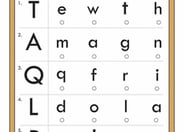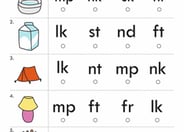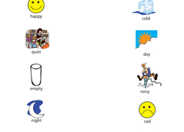- Worksheets
- Games
- Lesson Plans
- Workbooks
- Exercises
- Science Projects
- Skills Progression
- More
Search Kindergarten Reading & Writing Educational Resources
2,433 filtered results
2,433 filtered results
Kindergarten
Reading & Writing
Sort by

Comparing Information
Guided Lesson
Comparing Information
Learning how to read fluently includes more than just piecing letters together to form words. Kids also have to read from left to right and notice spacing between words. Help your child become a fluent reader by tackling these skills.
Kindergarten
Reading & Writing
Guided Lesson























